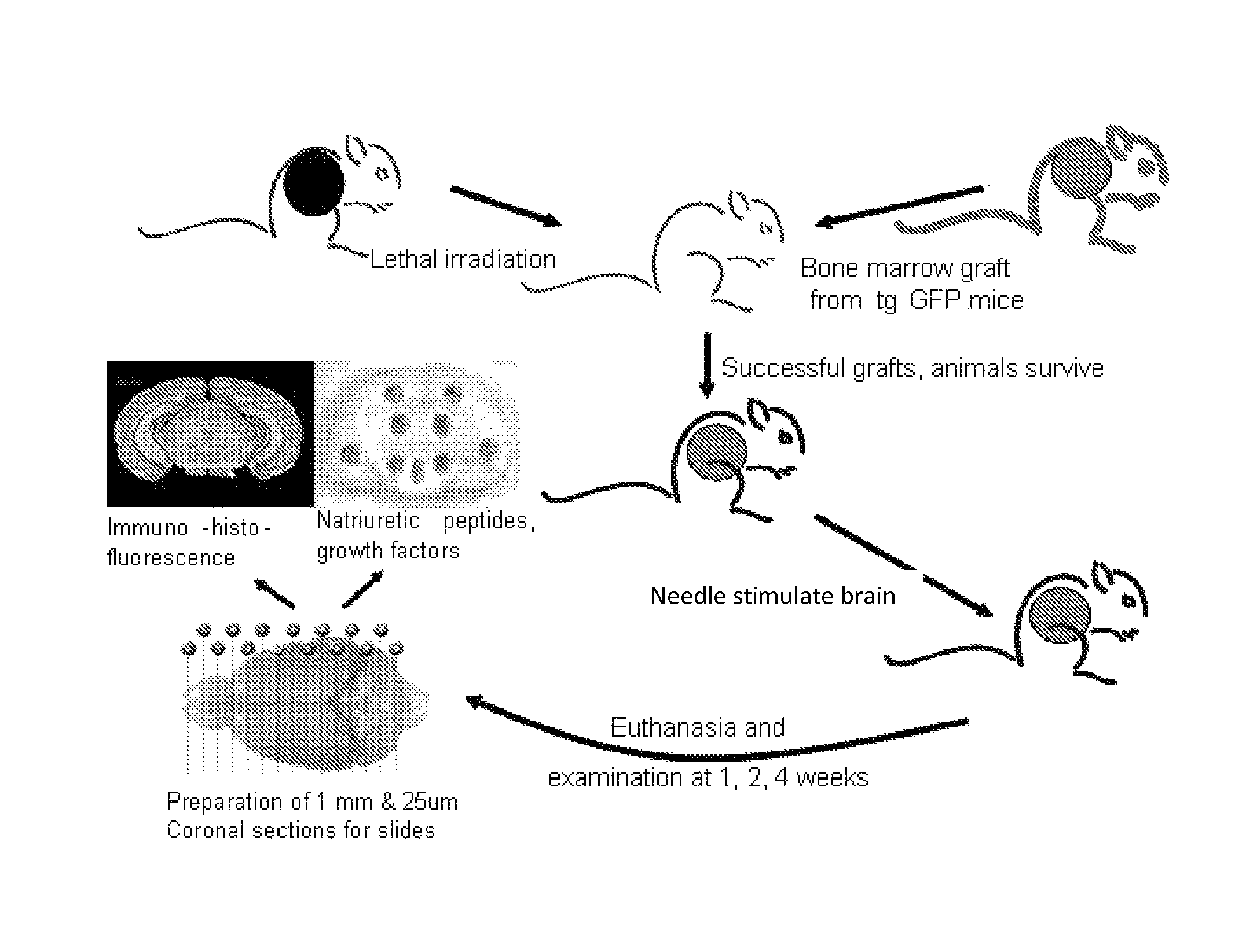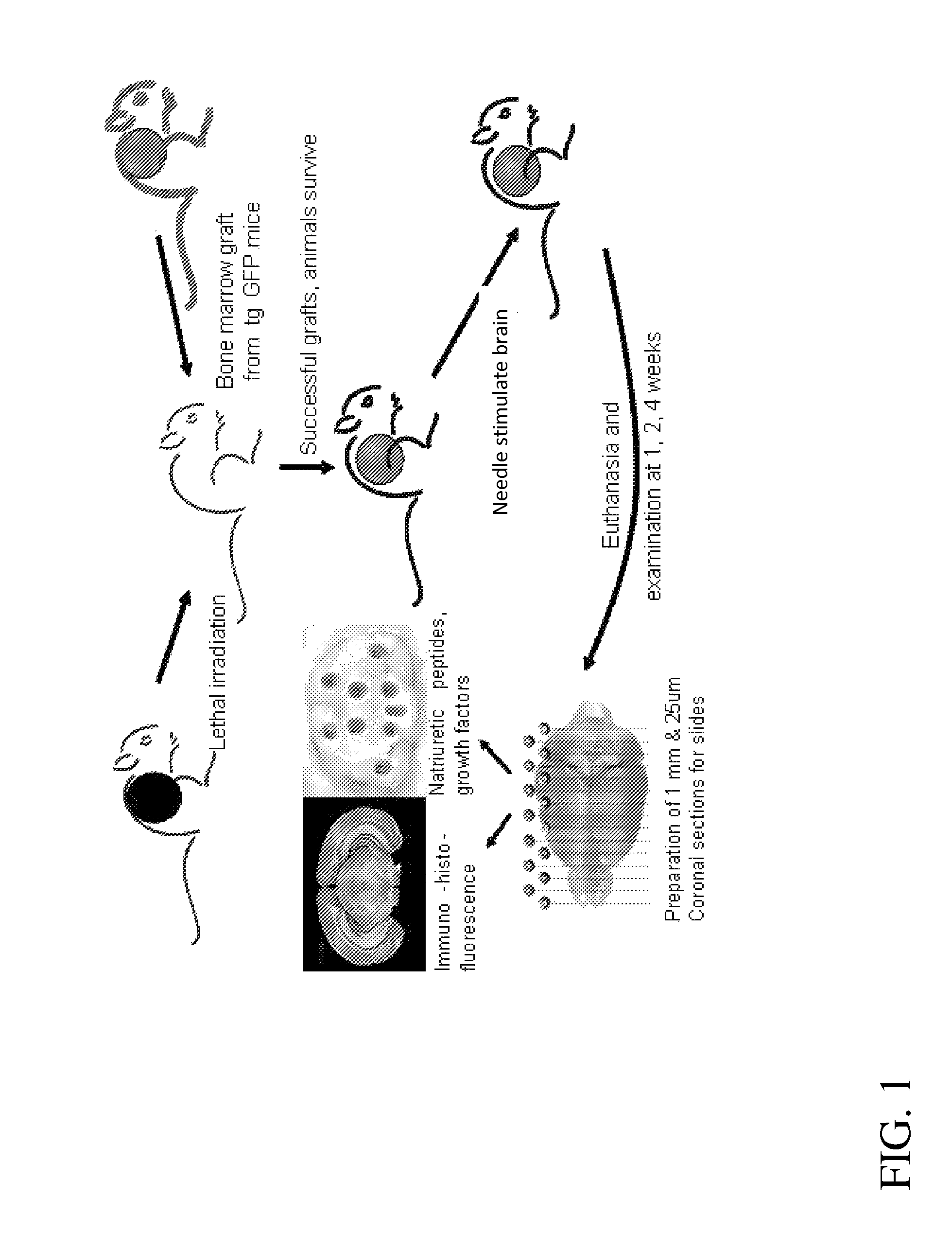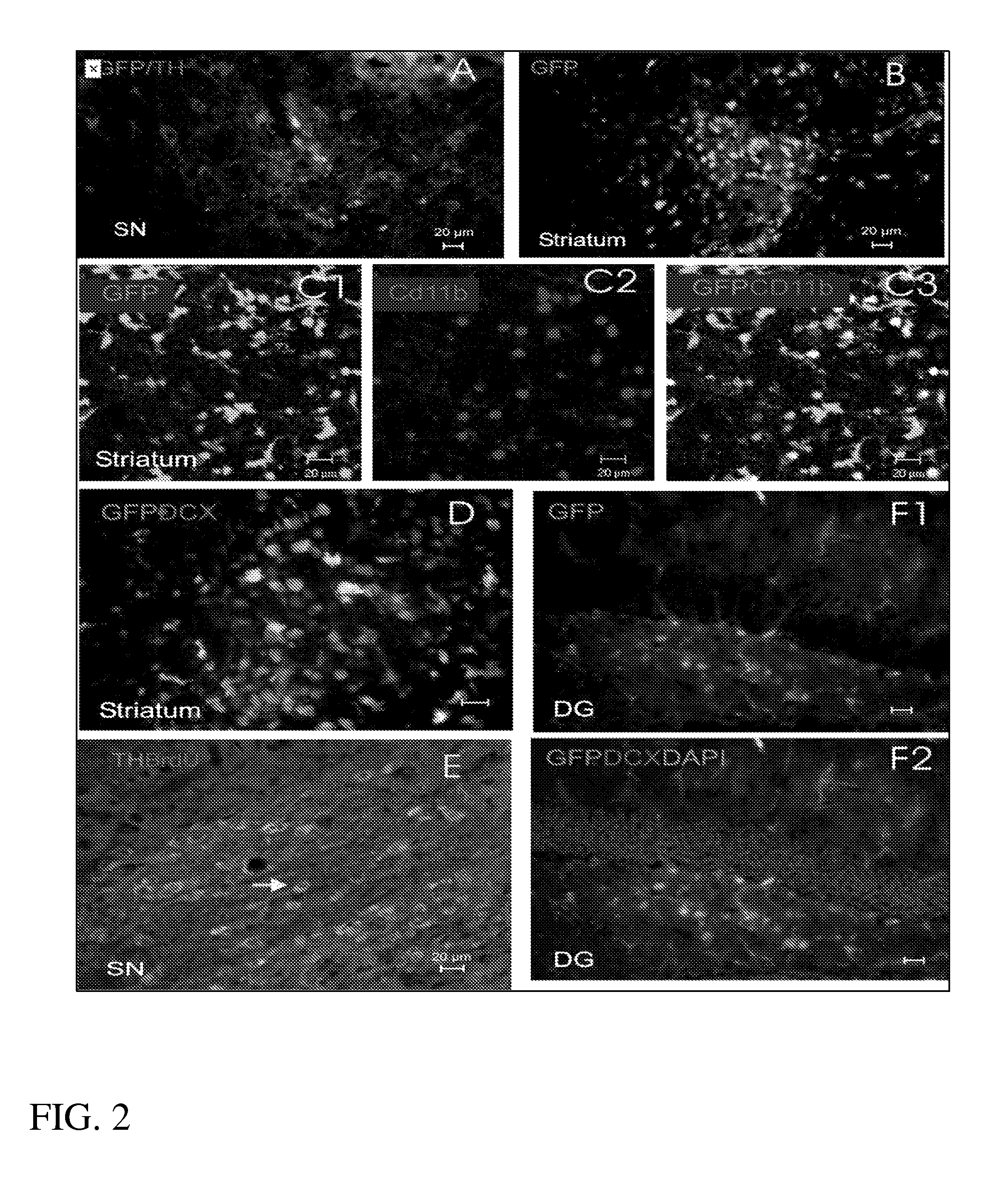Promotion of brain self-repair mechanisms by stereotaxic micro-stimulation
a stereotaxic micro-stimulation and brain technology, applied in the field of brain self-repair mechanisms, can solve the problems of impaired memory, thinking and behavior, impaired brain synaptic activity, and stiff joints
- Summary
- Abstract
- Description
- Claims
- Application Information
AI Technical Summary
Benefits of technology
Problems solved by technology
Method used
Image
Examples
example
Mobilization of GFP+ Cells from the Periphery in to the CNS Following Focal Micro-Lesions of Brain
[0073]A sterile micro-needle (200 microns maximum shaft diameter, similar to the acupuncture needle) was transiently inserted stereotaxically into four different sites: corpus striatum, dorsal hippocampus, cerebellum and ventral midbrain. Several of the mice underwent bromodeoxyuridine (BrdU) injections (100 mg / kg i.p.×2) on the day of transient insertion of the needle to label newly born cells. One, two and four weeks after making the micro-lesions, mice were euthanatized and their brains were processed for immunohistochemistry. GFP+ cells were readily visualized at the site of the micro-lesions in striatum, ventral midbrain and hippocampus (FIG. 2). The GFP+ cells could be found along the tract of the needle and extending beyond the locus of the lesion. In the striatal lesion (FIG. 2B, 2C) many of the GFP+ cells that had infiltrated the lesion from the peripheral circulation bore the ...
PUM
 Login to View More
Login to View More Abstract
Description
Claims
Application Information
 Login to View More
Login to View More - R&D
- Intellectual Property
- Life Sciences
- Materials
- Tech Scout
- Unparalleled Data Quality
- Higher Quality Content
- 60% Fewer Hallucinations
Browse by: Latest US Patents, China's latest patents, Technical Efficacy Thesaurus, Application Domain, Technology Topic, Popular Technical Reports.
© 2025 PatSnap. All rights reserved.Legal|Privacy policy|Modern Slavery Act Transparency Statement|Sitemap|About US| Contact US: help@patsnap.com



